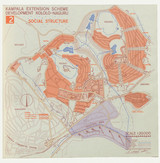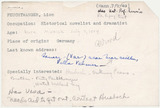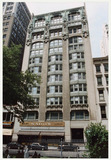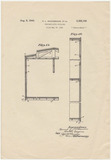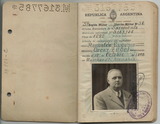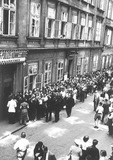Accent roles
For actors it was particularly difficult to find work in exile in foreign-speaking countries. While many emigrants, to the USA for example, picked up day-to-day English relatively quickly, their accents generally betrayed their origins.
Afrika
At the time of the Nazi regime in Germany, most of the African continent was still marked as the territory of European colonial powers.
Aid organisations
Fleeing from the Nazis and aiding those who fled during Nazi ruleDuring Nazi rule there were many aid organisations that provided rescue and refugee assistance to emigrants. They worked at international, national or regional level and were often religious, Zionist or connected to a political party or movement.
American Guild for German Cultural Freedom
The American Guild for German Cultural Freedom was an aid organisation for German artists and intellectuals. Prompted by Prince zu Loewenstein, it was founded as part of the Deutsche Akademie im Exil [German Academy in Exile] in the USA in 1935.
American Jewish Joint Distribution Committee
The American Jewish Joint Distribution Committee (JDC) was originally founded in 1914 to help Jewish victims of the First World War. In the interwar years, the focus of the Jewish-American organisation was initially on the impoverished Jewish communities in the Soviet Union and Eastern Europe.
Arbeiter-Illustrierte-Zeitung (AIZ) / Workers’ Illustrated Newspaper
An illustrated publication offers resistance in exileOne of the illustrated newspapers in the Weimar Republic with the strongest circulation was the Arbeiter-Illustrierte-Zeitung (AIZ), which was published in Berlin as a Communist propaganda paper. The history of the AIZ is closely linked to its publisher and founder Willi Münzenberg.
Architecture
The expulsion of artists from Germany and Austria by the Nazi regime affected every occupational group within architecture, from freelance architects and municipal planning directors to evaluators and university instructors. With the Gesetz zur Wiederherstellung des Berufsbeamtentums [Law for the Restoration of the Professional Civil Service] from April 1933, many architects lost their tenures in administrative positions.
Argentina
Exiles who went to Latin America found refuge in Argentina in particular. This was due to the liberal immigration policy of the country, which gave foreigners the same rights as citizens.
Artists‘ International Association
The Artists' International Association (AIA) was founded in 1933 as a politically and socially committed organization of left-wing artists in London; it was subsequently reorganized in 1935. It was an association of painters, sculptors, graphic artists, craftspeople, designers, art educators, art students, art historians and curators who supported cooperation between artists in furtherance of the goals of peace and democracy.
Austria
In the first weeks after the Nazis came to power, many of the politically persecuted left Germany for neighbouring Austria in the way described by Loewenstein. Many refugees wanted to watch for developments in Germany from geographically proximate Austria for the time being.


